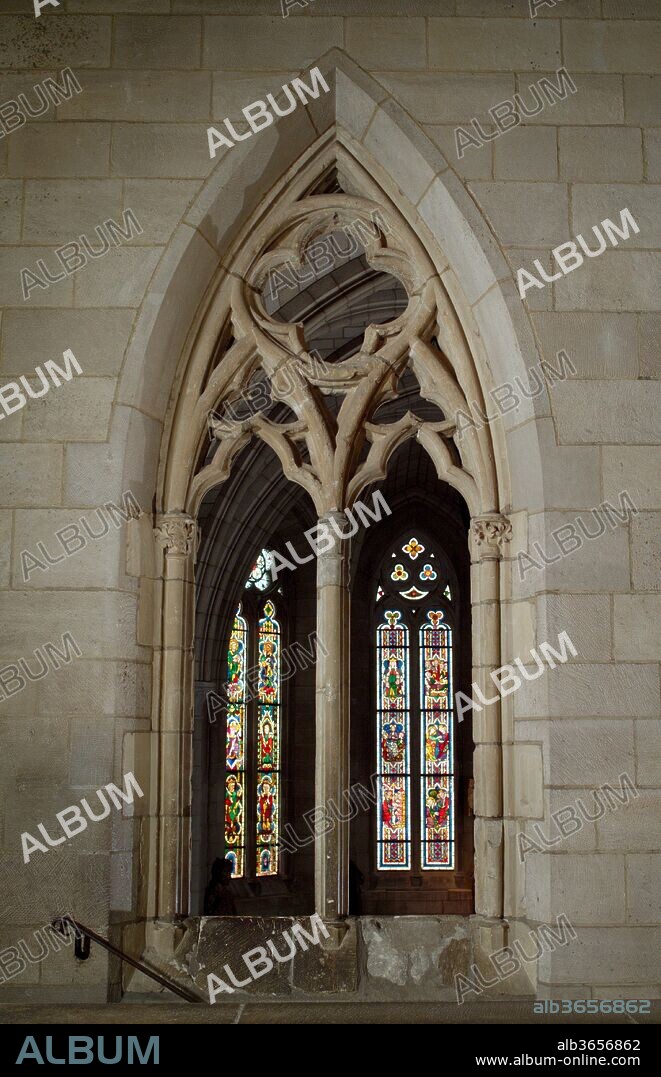alb3656862
double-lancet window

|
Add to another lightbox |
|
Add to another lightbox |



Title:
double-lancet window
Caption:
Double-Lancet Window. Culture: French. Dimensions: Overall: 13 ft. 6 in. x 7 ft. 5/8 in. (411.5 x 214.9 cm). Date: ca. 1275-1300.
This limestone window from La Tricherie, a small village near Châtellerault (between Tours and Poitiers), is constructed in a style typical of the late thirteenth century. The overall opening is organized into two identical lancets topped by a circle (oculus), which circumscribes a quatrefoil--a basic scheme that first appeared in window designs in the late twelfth century. In this version new elements have been introduced, such as trefoils composed of pointed, rather than rounded, leaf forms. The desire to create a diaphanous effect is evident in the piercing of the remaining surfaces between traceries, which leaves no solid fields in the skeletal structure. Small capitals decorate the vertical members (mullions) of the inscribed lancets. On the interior face the capitals are carved with broad, flattened leaves; on the exterior face the outer two are transformed into whimsical male and female heads.
Technique/material:
Limestone
Museum:
Metropolitan Museum of Art, New York, USA
Credit:
Album / Metropolitan Museum of Art, NY
Releases:
Model: No - Property: No
Rights questions?
Rights questions?
Image size:
2818 x 4368 px | 35.2 MB
Print size:
23.9 x 37.0 cm | 9.4 x 14.6 in (300 dpi)
Keywords:
 Pinterest
Pinterest Twitter
Twitter Facebook
Facebook Copy link
Copy link Email
Email

